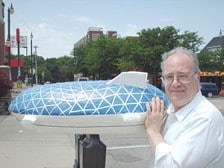Statewide contest seeks Iowa’s next great business ideas

.bodytext {float: left; } .floatimg-left-hort { float:left; margin-top:10px; margin-right: 10px; width:300px; clear:left;} .floatimg-left-caption-hort { float:left; margin-bottom:10px; width:300px; margin-right:10px; clear:left;} .floatimg-left-vert { float:left; margin-top:10px; margin-right:15px; width:250px;} .floatimg-left-caption-vert { float:left; margin-right:10px; margin-bottom:10px; font-size: 10px; width:200px;} .floatimg-right-hort { float:right; margin-top:10px; margin-left:10px; margin-bottom:10px; width: 300px;} .floatimg-right-caption-hort { float:left; margin-right:10px; margin-bottom:10px; width: 300px; font-size: 10px; } .floatimg-right-vert { float:right; margin-top:10px; margin-left:10px; margin-bottom:10px; width: 200px;} .floatimg-right-caption-vert { float:left; margin-right:10px; margin-bottom:10px; width: 200px; font-size: 10px; } .floatimgright-sidebar { float:right; margin-top:10px; margin-left:10px; margin-bottom:10px; width: 200px; border-top-style: double; border-top-color: black; border-bottom-style: double; border-bottom-color: black;} .floatimgright-sidebar p { line-height: 115%; text-indent: 10px; } .floatimgright-sidebar h4 { font-variant:small-caps; } .pullquote { float:right; margin-top:10px; margin-left:10px; margin-bottom:10px; width: 150px; background: url(http://www.dmbusinessdaily.com/DAILY/editorial/extras/closequote.gif) no-repeat bottom right !important ; line-height: 150%; font-size: 125%; border-top: 1px solid; border-bottom: 1px solid;} .floatvidleft { float:left; margin-bottom:10px; width:325px; margin-right:10px; clear:left;} .floatvidright { float:right; margin-bottom:10px; width:325px; margin-right:10px; clear:left;} By Joe Gardyasz
Darrell Campbell can see the future of air travel, and it’s shaped like a turtle.
The Ames resident hopes to launch a company to manufacture and operate rigid-hulled, helium-filled passenger airships. Each lighter-than-air craft would be powered by solar cells positioned on its fuselage and use biodiesel fuel for backup power. Able to land without a runway, the modern-day airships could provide a solution to the increasing gridlock that threatens the future of commercial aviation, Campbell believes.
His concept for Turtle Airships is one of 30 business plans selected last month to move forward to the next round of the John Pappajohn Iowa Business Plan Competition. Now in its second year, the contest offers $50,000 in cash prizes and attracted more than 70 entries this year.
Among the 30 semifinalists are these Central Iowa entrepreneurs:
Matt Ostanik and Olaf Peterson, whose company, Submittal Exchange LLC, has developed a paperless system for architects and contractors to use in exchanging building plans;
Don Myers, president of Camp Marketing Services, which operates Camp Registry, an online reservation system for sports camps; Daryn Geib, founder of Direct Lending Exchange, with a plan to develop a person-to-person online lending service.
This week, a panel made up of representatives of the Pappajohn Entrepreneurial Centers across the state will narrow the field to between seven and 10 entries, which will then compete for three top prizes of $25,000, $15,000 and $10,000, to be presented during the Iowa Venture Capital and Entrepreneur Conference on Oct. 10.
Probably more valuable than the cash prizes is the experience and resources the contest provides to many start-up companies, said Jamie Zanios, director of the John Pappajohn Entrepreneurial Center at North Iowa Area Community College.
“In many cases, the companies aren’t aware of all the resources available to them,” said Zanios, whose center is one of five across the state created and funded by Pappajohn, a Des Moines venture capitalist. “This provides a window of opportunity to them to know where they can get support services.”
Last year, an Ames software company, iSeek Corp., won the grand prize for its business plan for developing a company to distribute a shape-based search engine tool. The company has attracted leading computer-aided design software firms as partners, and counts Deere & Co. among its customers. The contest is open to start-up Iowa companies or those that have been operating for fewer than six years.
“We have some that have just launched, some that are looking to launch and some that have been around a little longer and are now looking for some explosive growth,” Zanios said. In the case of some start-up companies, the Pappajohn centers will do some due diligence of their own to ensure they understand the marketplace sufficiently to make their judgments, he said.
Turtle Airships
Turtle Airships’ business plan will likely send the judges searching for more information about the arcane world of lighter-than-air transportation.
Campbell’s business plan calls for constructing a remote-controlled, quarter-scale model and then raising funds through a limited stock offering to build a three-person, 120-foot-long demonstration craft to generate publicity for his venture.
“You have got to have the fire in the belly to do this,” he said, “because you come up against all kinds of dismissals, ridicule and a giggle factor, which is understandable. People see airships as archaic, slow and worthless. But all they’re familiar with is blimps. But we’re going to make something far more capable than those.”
It’s a concept he has been developing for the past 27 years while working in a variety of blue-collar jobs, most recently as a baker. He moved to Iowa a year ago because it has both a solar cell manufacturer and a growing biodiesel industry, two energy sources he wants to incorporate into the craft, he said.
A California company, Worldwide Aeros Corp., is developing a prototype of an airship similar in appearance to his design. Aeros hopes to get its design, a 650-foot cargo carrier capable of transporting a 400-ton payload, into the air by 2009.
Though he’s far behind Aeros in developing a prototype, Campbell believes he has a superior design. He has also filed for trademark protection for the Turtle name.
“What I’m trying to do is get something in the air before (Aeros), but smaller, much smaller,” he said. “The other advantage I have is the name, because ‘Turtle’ is absolutely beautiful. When (Aeros) flies its craft, everyone is going to say, ‘It looks like a Turtle.'”
Camp Marketing Systems
Don Myers went to Ames 17 years ago to play baseball for the Iowa State Cyclones, and he has been in Iowa ever since.

Having worked in sports media for most of his career, Myers recognized the potential for a service that would enable parents to more easily research sports camps for their children and register and pay online, in much the same way that Ticketmaster has streamlined concert ticket sales. He launched his online reservations system, Camp Registry (www.CampRegistry.com), in April 2006.
“What we’ve done is modernized the registration process for camp,” Myers said. “They can enter all the information for their son or daughter and pay with a credit card. The coaches promote online registration because it makes things easier. So what we’ve actually done is taken the arduous filling out a form, mailing a check and modernized it through the Internet.”
According to U.S. Census data, sports camps are a $1.4 billion industry and attract more than 10 million participants annually.
The Camp Success program at Drake University was the inspiration for Camp Registry, Myers said, noting that Drake men’s basketball coach Keno Davis is a minority owner and adviser to the company. Among other clients are college-level sports camps operated by the University of Nevada at Las Vegas, the University of Tennessee at Chattanooga and Coe College, as well as high school camps and individual-owned camps.
Camp Registry provides each camp with a Web site with no upfront fees. Each time a person registers for a sports camp, the company receives a portion of the registration fee, much like Ticketmaster operates.
With more than 70 clients now part of the registry, parents can comparison-shop based on the type of sport and location at which they wish their son or daughter to participate. In Iowa alone, for instance, Camp Registry provides access to 181 different basketball camps. Results from each search are displayed in a search engine format similar to Google, with links to each camp’s Web site for further information.
Use of Camp Registry’s online registration and payment function varies from 20 to 80 percent, depending on the program, Myers said. About 50 percent of Drake basketball camp participants, for instance, register online.
Submittal Exchange
When Matt Ostanik, president of Submittal Exchange LLC, heard about the business plan competition through the ISU Pappajohn Center for Entrepreneurship in Ames, he thought, “Why not? It’s a good chance for a small business to get some recognition and earn some extra cash.”

Ostanik used his experience as an architect with several Des Moines firms to formulate his plan for a company to automate the laborious submittal process for architectural paperwork.
“I just thought, there’s got to be a better way to do this,” he said. But he found nothing when he searched for companies offering such a service. Two years ago, he and Olaf Peterson launched the business, which provides contractors, architects, engineers and facility owners with access to documents for their construction projects on a secure, Web-based system at www.submittalexchange.com
Though it has required a shift in mindset on the part of users, “we’ve gotten a very positive response,” Ostanik said. “It makes a lot of sense for the architects and builders, as well as the facility owners.”
Among the projects that have taken their documentation online through Submittal Exchange are the city of Ankeny for its new police headquarters, which is now under construction. The company has also had a number of projects in Eastern Iowa as well as Minneapolis-St. Paul and St. Louis, he said.
With the volume of construction taking place in Central Iowa and across the country, and an estimated 90 percent of those projects still using paper, Submittal Exchange’s product has tremendous potential, Ostanik said. A small architecture firm could probably save about $50,000 a year in staff time that would be spent on managing paperwork, he said.
The company’s biggest challenge is building awareness, and it would likely use any prize money toward its marketing efforts, he said. “We’re still very early in development, but we’re still working very hard at getting awareness about it out there.”
Direct Lending Exchange
Daryn Geib always believed he would someday run his own business. What he didn’t know was that he would enter a fledgling online niche that didn’t exist a few years ago.

Geib, a former pharmacy technician who expects to complete requirements for a degree in accounting and finance from Drake University next year, didn’t want to be a typical financial planner with affluent clients. Instead, “I want to service the small-business owner or the small investor,” he said, by launching Direct Lending Exchange, a person-to-person online lending service.
Online Banking Report, a research firm, estimates that $100 million in new person-to-person loans will be generated through online services offered by companies such as Prosper Marketplace Inc., Lending Club Corp. and Loanio Inc. According to a recent article in The Wall Street Journal, lenders using those services are earning returns of 8 to 12 percent or more.
Operating under state licenses as a non-collateralized lender, Direct Lending Exchange will provide a market for potential lenders willing to make loans between $1,000 and $25,000, or to build a portfolio made up of smaller pieces of several loans, Geib said. Lenders will place the amount they wish to lend in a third-party online escrow account and then search for borrowers to whom they are willing to extend loans based on their creditworthiness, the region of the country in which they live and the interest rate they’re willing to pay.
Direct Lending Exchange will make its money by charging lenders and borrowers between 1 and 3 percent of the loan amount, depending on the borrower’s credit, when the loan is closed.
The company’s services will enable small business owners to lend money and generate some extra revenue from interest payments during slow periods, Geib said.
“Don’t put your money into that 5 percent CD; you can get 15 percent, and I can show you how,” he said. Direct Lending Exchange will also provide a means for lenders to sell all or portions of their loan portfolios.
Borrowers’ creditworthiness will be assigned grades from A through F, rather than credit scores. However, there will be no minimal credit grade, because lenders can decide if the interest rate offered is high enough to merit extending a loan.
Geib said borrowers will find the service an alternative to banks or credit unions that won’t lend them money because of their credit histories, and a way to avoid high fees required by payday lenders or check-cashing companies.
Each lender assumes the risk of default; however, Direct Lending Exchange will use all legal means at its disposal to collect the loans, Geib said. “Any investment has a risk, but by diversifying you can spread out your risk,” he said.








